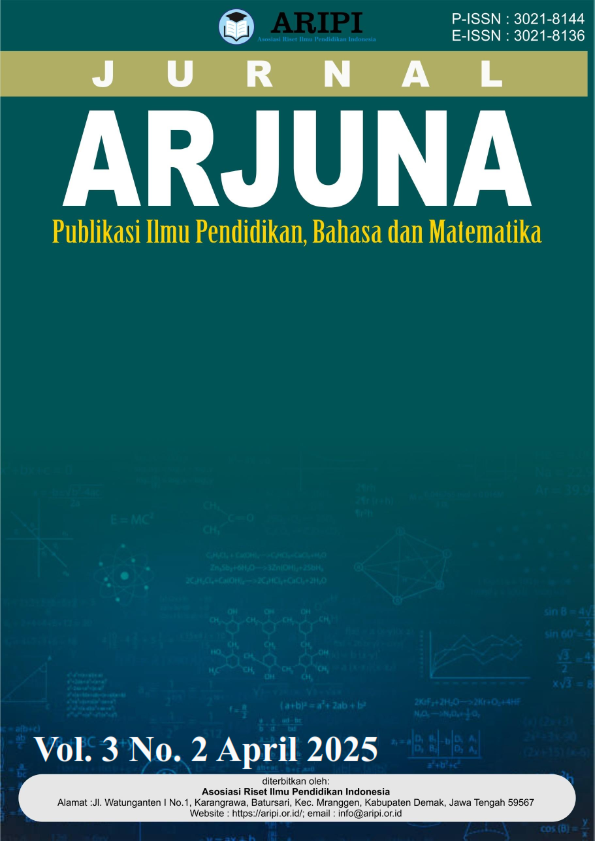Penerapan Probabilitas dalam Sistem Skoring untuk Evaluasi Kelayakan Beasiswa Mahasiswa Prodi Matematika Universitas Negeri Medan Tahun 2022
DOI:
https://doi.org/10.61132/arjuna.v3i2.1717Keywords:
Bayes Theorem, Probability, Scholarship, Scoring System, SelectionAbstract
This study aims to apply the concept of probability in the assessment system to assess students' eligibility to receive scholarships. By applying a probabilistic approach, especially Bayes' Theorem, this study develops a more objective and data-based evaluation method. The method used is a quantitative approach with probabilistic analysis, allowing the calculation of students' chances of getting scholarships based on factors such as Cumulative Achievement Index (IPK) and Single Tuition Fee (UKT). The data analyzed includes primary data from students applying for scholarships as well as secondary data from historical records of previous scholarship acceptances. The results of the study show that GPA plays a significant role in increasing the chances of receiving a scholarship, where students with higher GPAs are more likely to be accepted. Conversely, students with high UKT tend to have lower chances, indicating that financial conditions are also a major factor in selection. This probability-based approach increases transparency and fairness in the selection system and reduces subjectivity in decision making. This study confirms that a probability-based scoring system can be a fairer and more accurate solution in assessing the eligibility of scholarship recipients. It is hoped that the results of this study can be a reference for educational institutions in developing a more data-based and objective selection system.
Downloads
References
Bishop, C. M. (2006). Pattern recognition and machine learning. Springer.
Gelman, A., Carlin, J. B., Stern, H. S., Dunson, D. B., Vehtari, A., & Rubin, D. B. (2013). Bayesian data analysis (3rd ed.). CRC Press.
Grinstead, C. M., & Snell, J. L. (2012). Introduction to probability (2nd ed.). American Mathematical Society.
Hastie, T., Tibshirani, R., & Friedman, J. (2009). The elements of statistical learning: Data mining, inference, and prediction (2nd ed.). Springer.
Hosmer, D. W., Lemeshow, S., & Sturdivant, R. X. (2013). Applied logistic regression (3rd ed.). John Wiley & Sons.
Jolliffe, I. T., & Cadima, J. (2016). Principal component analysis: A review and recent developments. Philosophical Transactions of the Royal Society A: Mathematical, Physical and Engineering Sciences, 374(2065), 20150202. https://doi.org/10.1098/rsta.2015.0202
Koller, D., & Friedman, N. (2009). Probabilistic graphical models: Principles and techniques. MIT Press.
Montgomery, D. C., & Runger, G. C. (2020). Applied statistics and probability for engineers (7th ed.). John Wiley & Sons.
Murphy, K. P. (2012). Machine learning: A probabilistic perspective. MIT Press.
Ross, S. M. (2019). Introduction to probability models (12th ed.). Academic Press.
Sharma, S. (2017). Applied multivariate techniques. John Wiley & Sons.
Silver, N. (2012). The signal and the noise: Why so many predictions fail–but some don’t. Penguin.
Smith, A. (2020). Statistical learning with applications in R. Springer.
Wilks, D. S. (2011). Statistical methods in the atmospheric sciences (3rd ed.). Academic Press.
Witten, I. H., Frank, E., Hall, M. A., & Pal, C. J. (2016). Data mining: Practical machine learning tools and techniques (4th ed.). Morgan Kaufmann.
Downloads
Published
How to Cite
Issue
Section
License
Copyright (c) 2025 Jurnal Arjuna : Publikasi Ilmu Pendidikan, Bahasa dan Matematika

This work is licensed under a Creative Commons Attribution-ShareAlike 4.0 International License.






